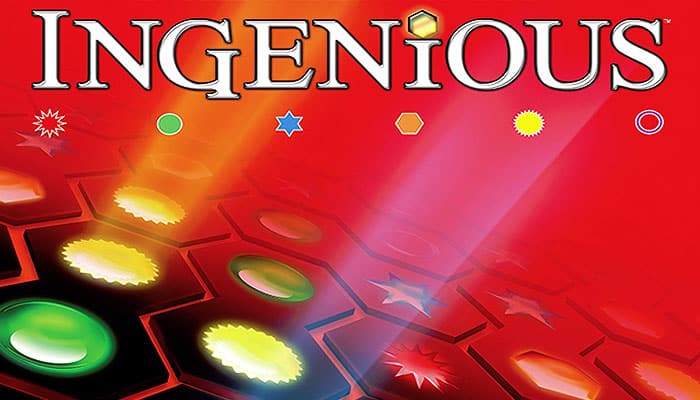
Components

- 1 game board
- 120 tiles
- 1 bag
- 4 racks
- 4 score boards
- 24 color pegs
- rulebook
Setup
Lay out the board.
Put the tiles in the bag and shuffle them.
Each player displays one score board in front of him and places one peg of each colour in the hole to the right of the colour symbols (value 0).
Each player places one rack in front of him (behind his score board), draws 6 tiles from the bag and places them on his rack so that only he can see them.

The Board
With 2 players only use the white spaces; with 3 players also use the light grey spaces; with 4 players use the whole board.
Object of the Game
Each player has six tiles with color symbols on his rack. In clockwise order, players play one of their tiles onto the board with the objective of establishing lines of matching symbols emerging from the placed tile.
This allows the players to advance the respective color markers on their score boards. Players must attempt to advance all six of their color markers, not leaving any one of them behind. When the board is filled, each player's lowest positioned marker defines his result. The player with the highest result wins.
Game Play
The youngest player begins, then play progresses clockwise. On your turn do the following:
-
Play One Tile
Choose one tile from your rack and place it on any two connected empty spaces on the board. In the first round, each player must play adjacent to a different one of the 6 symbols already printed on the board.
-
Score Your Tile
Start with one of the two symbols on the tile you played. There are five lines emerging from this symbol, as indicated below.

In each line count the number of identical symbols (printed on the board or on other tiles), but stop counting as soon as you come to an empty space or a different symbol. (Do not count the symbol on the tile you just played!)
The total count makes your score in this symbol and you advance your respective color counter on your score board accordingly. Then score the second symbol on the tile you played in a similar manner.

-
Refresh Your Hand
Draw one tile from the bag to refresh your rack to 6 tiles.
-
Swapping Your
Tiles If your rack does not contain any of the color(s) currently in lowest position on your score board, then, before you refresh your hand, you may show your tiles to the other players, put all tiles from your rack aside, refresh your rack with 6 new tiles from the bag and thereafter return your old tiles to the bag.
Bonus Play
Your counters cannot advance beyond the final spaces (value 18) on the score board. For each of your counters that reaches the final space, call out "Ingenious" and you get an instant bonus play of one tile.
Before refreshing, choose another tile from your rack, place it on the board and score it. Only after you have completed all your bonus plays, refresh your rack to 6 tiles.
End of the Game
The game ends when no further tiles can be played. Then determine the lowest color position of each player. This color is the player's score. The player with the best score wins. In the case of a tie, use the next lowest color as a tiebreaker, and so on.
In the very rare case that one player succeeds in advancing all 6 counters to the end of his score board, he wins instantly.
Example

Player A wins with a score of 10. Player B is 2nd with 9. Player C also has a score of 9 but his tiebreakers 12 and 13 are not as good as B's 12 and 14.
Continue Reading


